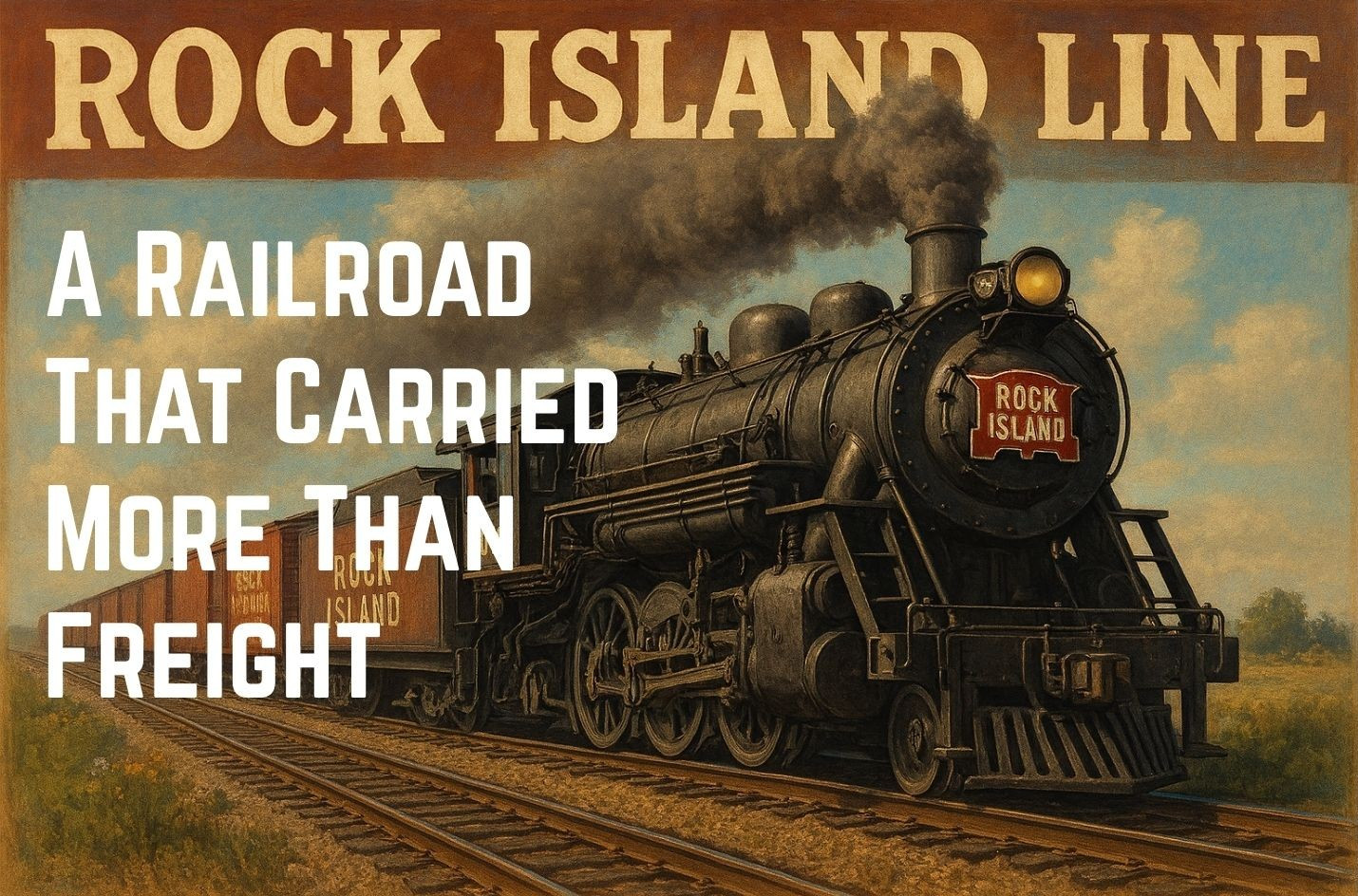Enthusiast Corner
The Rock Island Line: A Railroad That Carried More Than Freight
For railfans, the words “Rock Island Line” spark both the memory of a classic Johnny Cash song and the history of one of America’s most iconic railroads. Officially known as the Chicago, Rock Island & Pacific Railroad (CRI&P), the Rock Island Line was more than steel rails and locomotives—it was a symbol of the Midwest, of expansion, and of the people who kept America’s industry moving.
The Early Years
The Rock Island got its start in 1852, when the first train ran out of Chicago heading west. By the late 1800s, it had grown into a major system stretching across the Midwest and down into Texas, Oklahoma, Colorado, and New Mexico.
The Rock Island quickly became a vital artery for grain, coal, lumber, and livestock, linking small farming towns to big city markets. For many communities, the Rock Island was the first and only connection to the outside world.
Passenger Glory Days
While the Rock Island is often remembered as a freight hauler, it also had some legendary passenger trains. Names like the Rocket streamliners—fast, sleek trains with striking red and silver paint—still stir the hearts of railfans.
The Rock Island ran well-known routes such as:
- The Rocket: Linking Chicago with Peoria and beyond.
- The Twin Star Rocket: Running from Minneapolis to Houston.
- The Golden State: A partnership with the Southern Pacific, connecting Chicago to Los Angeles.
These trains represented speed, modernity, and comfort, competing head-to-head with giants like the Santa Fe and Union Pacific.
The Workhorse of Freight
Of course, freight was the Rock Island’s bread and butter. The railroad hauled:
- Grain from the Midwest to ports and processors.
- Coal from Iowa and Illinois to power plants and factories.
- Steel and manufactured goods that kept industry thriving.
The Rock Island became known for its sturdy fleet of locomotives, from steam engines in the early years to its famous roster of Alco, EMD, and GE diesels. Its locomotives often wore the iconic red, black, and white “The Rock” scheme in its later years—a look many railfans still consider one of the most striking liveries in rail history.
Hard Times and Decline
By the 1960s and 70s, the Rock Island Line was facing tough times. Competition from trucks and highways cut into freight. Passenger service was shrinking nationwide, and financial struggles mounted. Despite bold moves—including a rebranding as simply “The Rock”—the railroad couldn’t turn the tide.
In 1980, the Rock Island was officially shut down and its assets sold off to other railroads. Union Pacific, Kansas City Southern, Soo Line, and others absorbed pieces of the once-proud system.
The Rock Island Spirit Lives On
Even though the company itself is gone, the Rock Island Line lives on:
- Many of its routes are still in use today under different railroads.
- Its passenger cars and locomotives are preserved in museums and heritage railways.
- And of course, its name carries on in folk and popular culture through the legendary song “Rock Island Line.”
For railfans, the Rock Island Line is a reminder of a classic era of American railroading—when a train whistle through a small town meant connection, progress, and possibility.
Why Rail Enthusiasts Still Love the Rock Island
The appeal of the Rock Island Line isn’t just nostalgia. It’s the story of a scrappy railroad that, for more than a century, punched above its weight. It was never the biggest system, nor the richest, but it carved out a place in history with its Rockets, its hard-working freight crews, and its iconic name.
And maybe that’s why train lovers still smile when they hear that famous lyric: “Well, the Rock Island Line is a mighty good road…”

